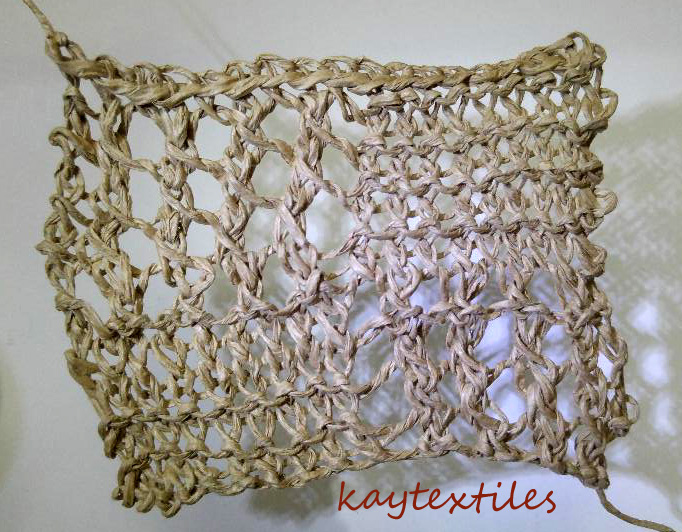See M12.
A. Underside Couching Hand Stitch
For the background I painted 15 holes/inch canvas with Prussian Blue Hue Golden Fluid acrylic.
Using a previous stitch sample (Image 231 - MM45), I took a rubbing from it to make into a paper cut-out to use as a template (MM46).
Using this as an outline I painted the shape on the canvas using Inscribe Pure Gold acrylic (MM47).
Onto the canvas I couched two threads:
- Lizbeth Size 20 thread - 100% Egyptian Cotton - Ecru #603, and
- cream rayon,
using DMC gold Fil Or a broder (72%viscose, 28% polyester) as the couching thread. This is a three-standed thread and I used all the strands just as they came off the bobbin without separating and reuniting them first, which I would usually do with stranded cottons.
And, two days of quite intense stitching later!!!
And, two days of quite intense stitching later!!!
MM48 - sample front 11cmWx12cmH
MM49 - sample back
MM50 - view of back of sample from side to highlight texture
MM51 - zooming in on back.
I had a bit of a false start as I cut off what I thought was enough of the top threads for the first row, but, of course, because of the underside couching I didn't cut them long enough. I took it out and started again feeding the top threads from their bobbins without cutting them to stitch the sample. This had the advantage that there was no finishing off and restarting the top threads. On canvas there is not really anywhere to hide these maneuvers. The gold thread had to be restarted in various places and so I couched some of the top threads over this on the back so that the piece could be reversible.
Tensioning was a challenge, but probably here lies the creative beauty of this technique. I definitely like the back of the sample better than the front. You could have fun pulling the top threads below further than necessary to create lovely loops (I did this on occasion but pulled them tight as I went along (you do really have to watch every stitch) but they could have been left as they were.
There are three distinct areas of pattern on the sample created using different stitch lengths. The longer stitch lengths give creative possibilities depending on the tension. In MM51 you can see how the lines of gold are not parallel and alter depending on which side of the top thread you start the couching from and how tight you pull it down.


















































